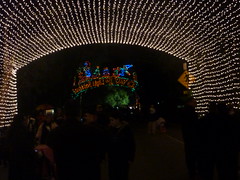Fair and Festival Holidays Time in Rajasthan

When my friends suggested that we go to Rajasthan, I wondered why not go to Himachal Pradesh or Sikkim, as the natural beauty there is much better than the arid and semi-arid desert state of Rajasthan – or so I thought. I realized how wrong I was when I saw for myself that Rajasthan is actually a land of colors.
What nature has not bestowed on it, the people more than make up through the color of their clothes and their unique festival holidays. Rajasthan is rich in its cultural life, arts and architecture and the number of festivals that are celebrated. In fact the arid and semi-arid deserts of Rajasthan come alive to the sound, color, joy of its many social and religious festivals.
When we landed in Rajasthan tour, we were lucky to see the Gangaur festival during which the ladies of the household celebrate the coming of spring. To reflect the colors of the spring, unmarried girls dress up in vibrant colors and observe a fast with the objective of getting a good husband.
Even married ladies observe a fast for the good health of their husbands. The use of henna to make exquisite patterns on the palms is a common practice. Dressed in the best attire with vibrant colors, ladies and girls carry a pot (kalash) to the temple and pray to Lord Shiva and his consort goddess Parvati. Shiva is also called Gan and Parvati is called Gauri or Gaur, so the name for the festival – Gangaur.
If the Gangaur festival drew participation mainly from ladies, the Teej or Kajli Teej festival celebrated in the town of Bundi in Rajasthan was open to all. We never realized that we were in for a feast of Rajasthani folk dances and stage shows during the Teej festival that is celebrated around July and August, depending on the dates according to the Hindu calendar. Although the festival proper is celebrated over three days, sometime the festive fervor is stretched to last till the major Hindu festival of Janmastami that commemorates the birth of Lord Sri Krishna. This makes Teej an ongoing festival season.
What took our fancy during the Teej festivities was the procession that carried the idol of Goddess Teej. The procession is the highlight of the festival and the idol is accompanied by festooned and decorated camels, elephants, horses. The procession is followed by a troupe of artistes and performers who entertain the participants with their performances. The festival presents an occasion for talented boys and girls to present their skills before an appreciative audience.
The ladies in our group also joined in the performances and participated in the Ghoomar dance that typifies the festive and lively spirit of Rajasthan.
Next time we go back to Rajasthan we want to time our visit with the Camel Festival organized at Bikaner and the Desert festival both of which are organized during January. In fact from October to March is the festival time in Rajasthan when the different religious and social festivals add color and spice to the life of people.